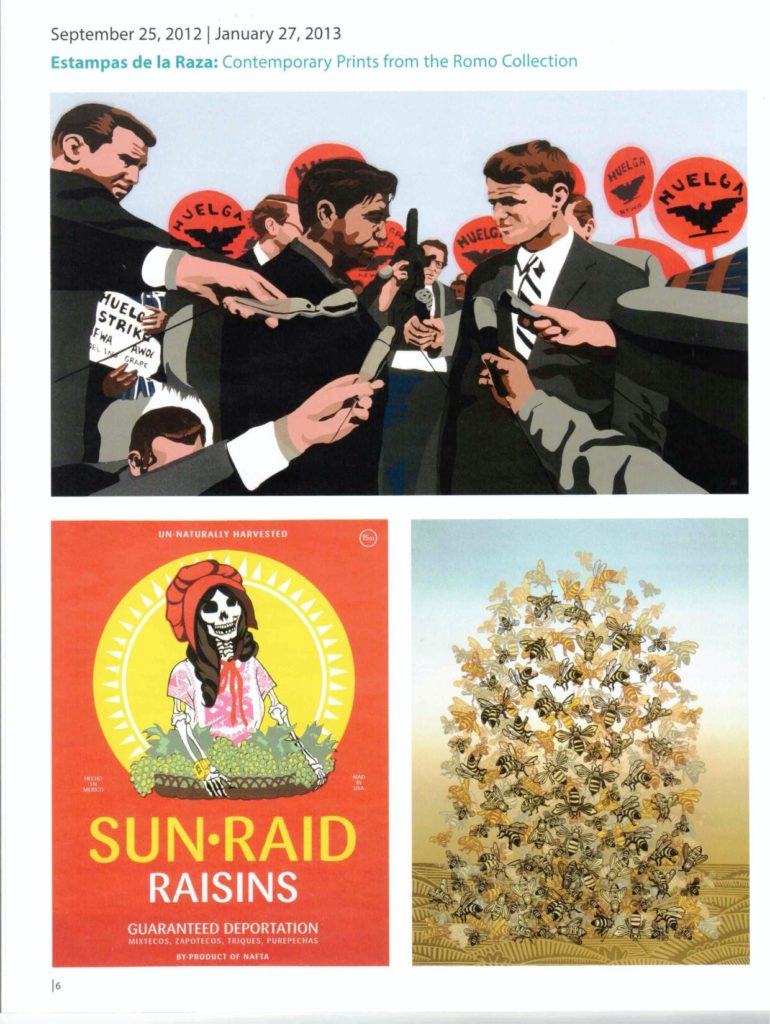By Dr. Ricardo Romo
Latinos benefit by engaging in the arts, and not just for the obvious reasons of enjoying beauty and creativity. In many Latino communities we too often celebrate the arts and music largely as spectators in seasonal social activity such as Fiesta, Dia de los Muertos [Day of the Dead], or a Mariachi serenade for a birthday event. It turns out, this is not enough if we desire a longer and happier life. A recent scientific study has found that museums and music concerts are actually good for our very survival.
In a January New York Times article, “Going to Museums May Be Good for Your Health,” Maria Cramer cited a new British study that found that “simply being exposed to the arts may help people live longer.”
British researchers “also noted that engaging in the arts can reduce loneliness, promote empathy and emotional intelligence, and keep people from becoming sedentary–all factors that contribute to a longer life.”
I am a big fan of museums–but I only started going to museums after graduating from college.Growing up in San Antonio during the 50s and 60s my leisure time was limited to going to the movies and weekend school
dances. On our few school field trips in elementary school we explored a deep cavern, climbed Roundtop Mountain, and went to the fabled Playland. But never to a museum or music concert.
That has changed today, and for the better. Whenever I visit the Witte Museum, Institute of Texan Cultures, McNay Museum of Contemporary Arts, Briscoe Western Art Museum, or San Antonio Museum of Art, I am likely to find school buses lined up near the entrances. But more has to be done by these museums to attract Latino adults, especially those of ages 50 and over. The British scholars noted that a sense of purpose in life is important and “being involved and excited by the arts keeps and maintains your purpose in life.”
Over the past five years the McNay Museum of Contemporary Arts has stepped up celebrating Latino art. Their art exhibits have featured sole exhibitions by Cesar Martinez, Kathy Vargas, and Michael Menchaca. In addition the Romo Collection was utilized for the Estampas de la Raza [61 prints], Richard Duardo “Pop Art” [20 prints], Juan De Dios Mora [20 prints] and Las Chicanas [25prints] exhibits. The latter was recognized by the Smithsonian as one of the ten exhibits in America to see in 2019.
Most urban scholars define great cities by their economic activity, manufacturing base, transportation infrastructure, excellent hospitals and schools, and great parks –New York, Chicago, and Los Angeles come to mind. But these cities recruit a steady influx of highly educated workers, and these workers also want assurance that their communities will support universities that offer post graduate degrees, public recreational facilities, green spaces, museums, public libraries, and music events.
A defining moment in San Antonio’s aspirations for recognition as a “great city” came in March of 1983 when San Antonio received recognition as an “All American City.” Everyone, including The New York Times credited Mayor Henry Cisneros’ leadership in achieving that distinction.
I had the opportunity to have lunch with Secretary Cisneros last week and while much of the conversation focused on the pending international crisis, we got around to talking about one of his main passions–music. I mentioned the British study reported in the The New York Times and he smiled because Secretary Cisneros has always enjoyed music and attends concerts in San
Antonio and New York City where one of his companies is located.
We are learning from British scholars that art and music keeps us engaged, and fulfills the need for an inner peace and relaxation. Participating in art and music events and can be a contributor to a longer life. Knowing that art and music are good for our health, will city leaders step up to increase funding for arts and humanities? Will more San Antonians from all parts of the city participate in concert events and attend museums? I certainly hope so.



Recent Comments